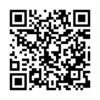Model:LateralVerticalIncision
From CSDMS
LateralVerticalIncision
Metadata
|
|
|
Introduction
History
References
| Nr. of publications: | 1 |
| Total citations: | 51 |
| h-index: | 1 |
| m-quotient: | 0.11 |
| Featured publication(s) | Year | Model described | Type of Reference | Citations |
|---|---|---|---|---|
|
Malatesta, Luca C.; Prancevic, Jeffrey P.; Avouac, Jean-Philippe; 2017. Autogenic entrenchment patterns and terraces due to coupling with lateral erosion in incising alluvial channels: AUTOGENIC INCISION BY ALLUVIAL CHANNELS. Journal of Geophysical Research: Earth Surface, 122, 335–355. 10.1002/2015JF003797 (View/edit entry) | 2017 | LateralVerticalIncision |
Model overview | 51 |
| See more publications of LateralVerticalIncision |

